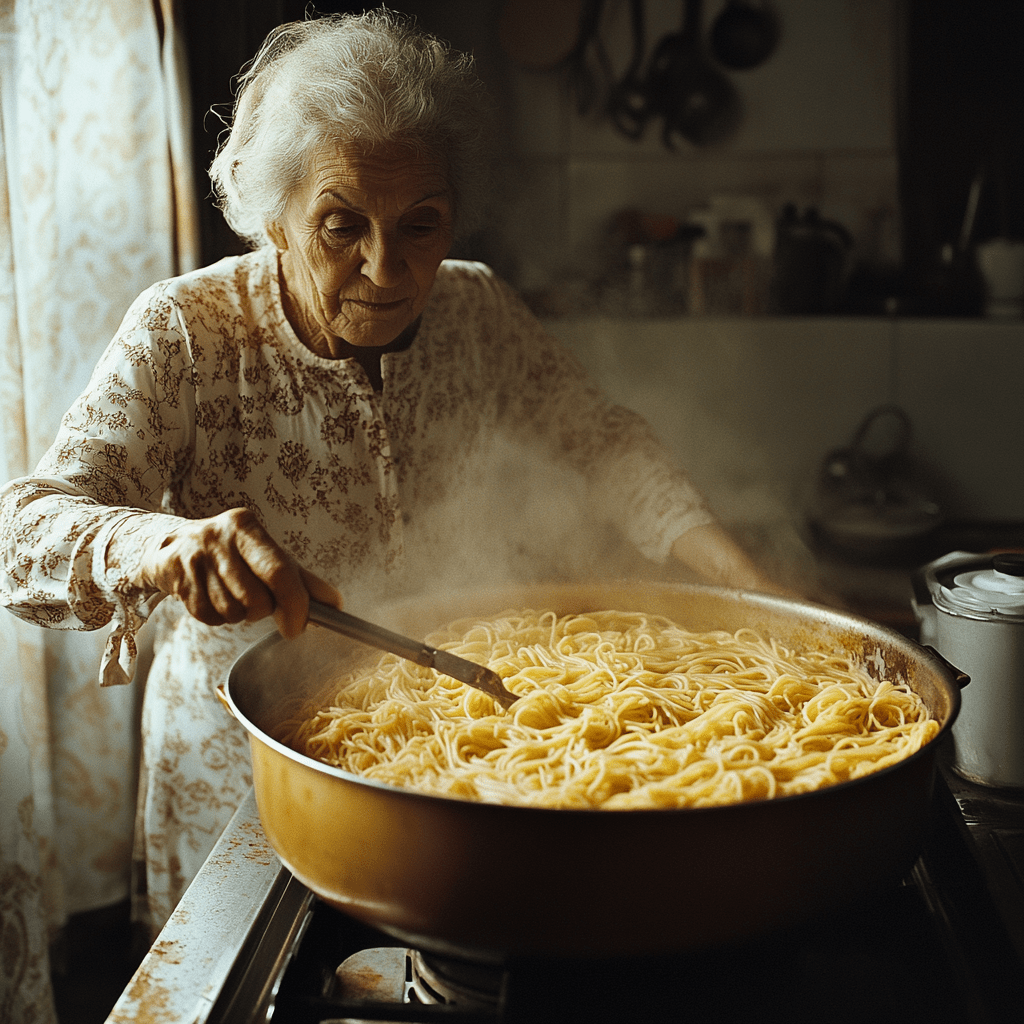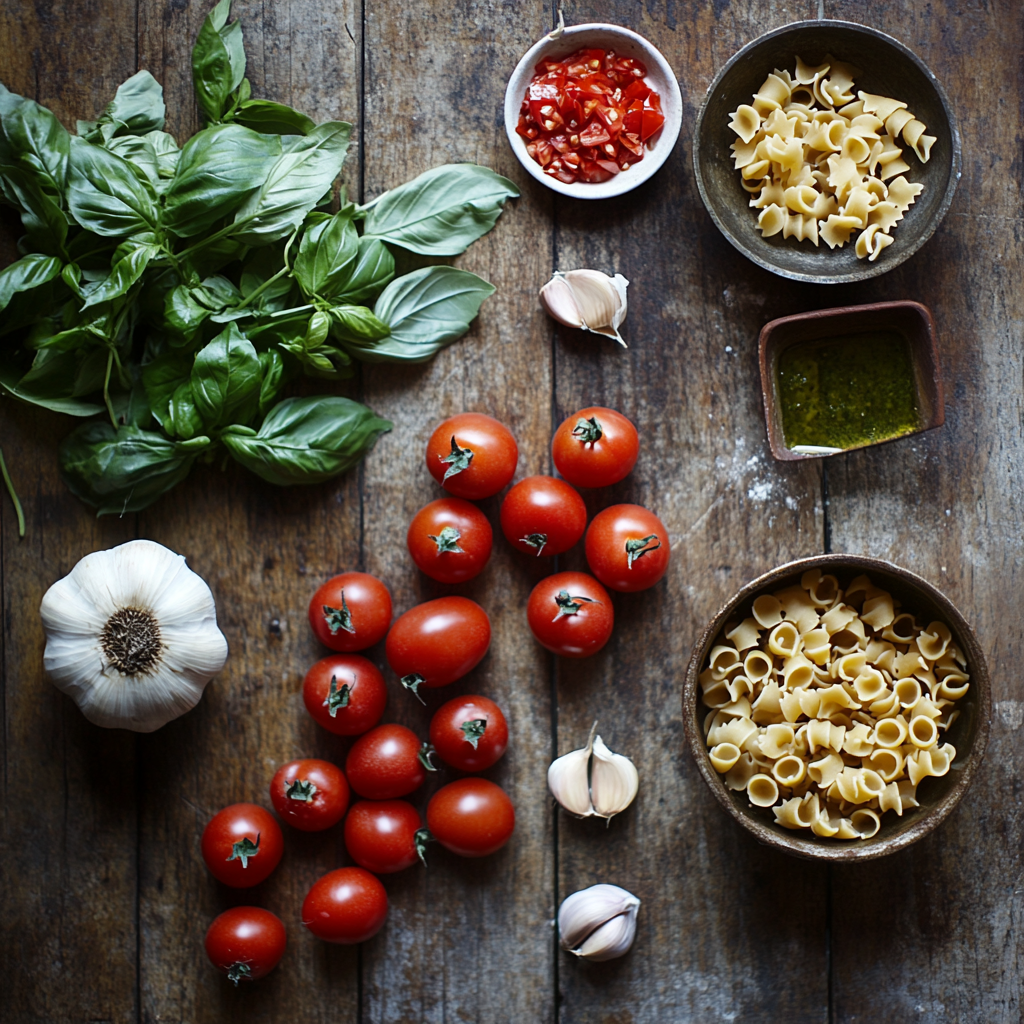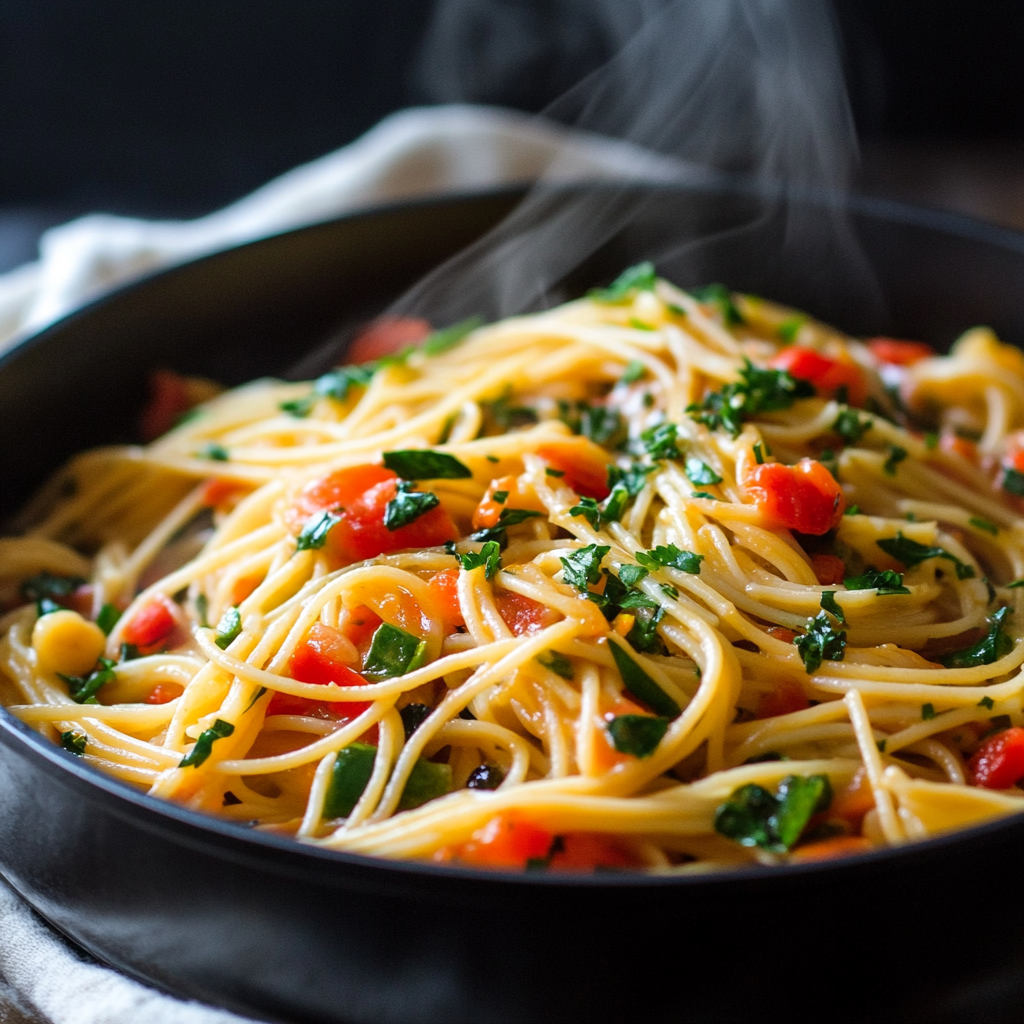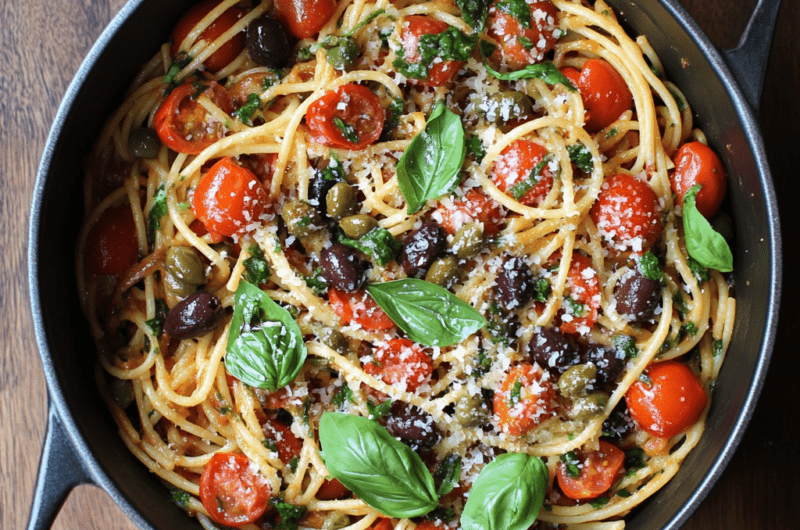In the world of Italian cuisine, there’s a secret weapon that grandmas have been wielding for generations: the one-pot pasta. It’s a dish that combines simplicity, flavor, and tradition in a single pan. But what makes this humble meal so special? Why do Italian nonnas swear by it? Let’s unravel the mystery of this culinary gem that’s been hiding in plain sight.
Not all one-pot pastas are created equal
When it comes to one-pot pasta, not all recipes are authentic Italian creations. Many modern interpretations miss the mark on what makes this dish truly special. The key lies in understanding the traditional Italian approach to one-pot cooking.

Italian grandmothers have been perfecting dishes like “pasta e ceci” (pasta with chickpeas), “pasta e fagioli” (pasta with beans), and “pasta e patate” (pasta with potatoes) for generations. These are the true one-pot wonders of Italian cuisine, where pasta cooks alongside other ingredients, absorbing flavors and creating a harmonious dish.
The modern trend of throwing uncooked pasta into a pot with raw vegetables and cold water? That’s not quite what nonna had in mind. The authentic method involves building layers of flavor, often starting with a soffritto (a base of sautéed aromatics) and adding ingredients in a specific order to ensure everything cooks perfectly.
The magic is in the starch
What’s the secret to the creamy, luscious texture of a nonna’s one-pot pasta? It’s all about the starch. When pasta cooks in a limited amount of liquid, it releases its starch into the sauce, creating a naturally thick and silky consistency.
This technique is a far cry from the common mistake of overcooking pasta in a large pot of water and then drowning it in a separate sauce. By cooking the pasta directly in the sauce, you’re creating a dish where every strand is infused with flavor and perfectly coated.
The starch also helps to bind the sauce to the pasta, ensuring that each bite is packed with flavor. It’s a simple principle, but one that makes a world of difference in the final dish.
Quality ingredients make or break the dish

Italian grandmothers know that the key to a great one-pot pasta lies in the quality of the ingredients. This isn’t the time to use that dusty jar of dried herbs that’s been sitting in your cupboard for years. Fresh, high-quality ingredients are non-negotiable.
Start with a good extra virgin olive oil. It forms the foundation of your dish, so don’t skimp here. Fresh garlic and onions are essential for building flavor. As for tomatoes, San Marzano tomatoes are the gold standard for sauce-based pasta dishes. Their sweet-tart flavor and low seed count make them ideal for creating a rich, flavorful sauce.
When it comes to the pasta itself, look for bronze-die extruded pasta. This type of pasta has a rougher texture that helps the sauce cling better, resulting in a more satisfying bite.
Timing is everything
One common pitfall in making one-pot pasta is poor timing. Throwing everything into the pot at once might seem convenient, but it often leads to overcooked vegetables and undercooked pasta. Italian grandmothers have mastered the art of adding ingredients at just the right moment.
Start by sautéing your aromatics to build a flavor base. Then add any longer-cooking vegetables or meats. The pasta goes in next, along with just enough liquid to cook it through. Quick-cooking ingredients like fresh herbs or delicate vegetables are added towards the end to preserve their flavor and texture.
Remember, pasta continues to cook even after you’ve taken it off the heat. Aim to finish cooking the pasta about 2 minutes before you think it’s done. The residual heat will finish the job, resulting in perfectly al dente pasta.
The pasta water isn’t just water

In a traditional pasta dish, the pasta water is often referred to as “liquid gold” due to its starch content and ability to help sauce adhere to pasta. In a one-pot pasta dish, this principle is taken to the extreme.
As the pasta cooks, it releases its starch directly into the sauce, creating a rich, silky texture. This is why it’s crucial not to add too much liquid at the start. You want just enough to cook the pasta and create a sauce, not so much that you end up with soup.
If your sauce seems too thick towards the end of cooking, you can always add a splash more water. But remember, it’s much easier to thin out a sauce than to thicken it up.
Don’t forget the final touch
Italian grandmothers know that the dish isn’t complete until you add the finishing touches. A sprinkle of freshly grated Parmigiano-Reggiano or Pecorino Romano cheese can elevate your one-pot pasta from good to great. The sharp, salty flavor of these aged cheeses adds depth and complexity to the dish.
A drizzle of high-quality extra virgin olive oil just before serving can also work wonders. It adds a fresh, fruity note that complements the cooked flavors of the dish. And don’t forget a handful of fresh herbs. Basil, parsley, or oregano can add a burst of color and a fresh flavor that brightens up the entire dish.
Remember, these final touches aren’t just garnishes. They’re integral parts of the dish that bring balance and depth to the flavors you’ve built.
The pan matters more than you think
The choice of pan can make or break your one-pot pasta. Italian grandmothers often reach for their trusty wide, shallow pans known as “padelle” or “tegami”. These pans allow for even heat distribution and provide enough surface area for the pasta to cook evenly.
A pan with high sides is crucial to contain the pasta and sauce as they cook together. Avoid using a pot that’s too deep, as this can lead to uneven cooking and a sauce that’s too watery.
If you don’t have a traditional Italian pan, a large, wide skillet or sauté pan will do the trick. Just make sure it’s big enough to hold all your ingredients comfortably.
Embrace imperfection and variation
One of the beauties of the one-pot pasta is its versatility. Italian grandmothers know that no two batches will ever be exactly the same, and that’s part of the charm. The dish adapts to what you have on hand, making it perfect for using up leftover vegetables or that last bit of cheese in the fridge.
Don’t be afraid to experiment with different combinations of ingredients. While traditional recipes are a great starting point, the true spirit of Italian home cooking lies in adaptation and improvisation. Maybe you’ll discover a new favorite combination that becomes your family’s signature dish.
Remember, the goal isn’t perfection, but rather a delicious, comforting meal that brings people together. That’s the true essence of nonna’s cooking.
Nonna’s One-Pot Pasta
Course: Main CourseCuisine: Italian4
servings30
minutes40
minutes300
kcalA quick and flavorful Italian pasta dish that combines tradition with convenience, perfect for busy weeknights or lazy weekends.
Ingredients
12 oz (340g) linguine or spaghetti
1 pint (300g) cherry tomatoes, halved
1 medium onion, thinly sliced
4 cloves garlic, thinly sliced
1/2 cup (50g) pitted Kalamata olives, halved
2 tablespoons capers, drained
1/2 teaspoon red pepper flakes
2 tablespoons extra virgin olive oil
4 cups (950ml) water
1 teaspoon salt
1/4 cup fresh basil leaves, torn
Freshly grated Parmesan cheese, for serving
Directions
- In a large, wide pan or skillet, combine the linguine, cherry tomatoes, onion, garlic, olives, capers, red pepper flakes, olive oil, water, and salt. Ensure that the pasta is mostly submerged in the liquid. Don’t worry if some parts are sticking out; they will soften as the dish cooks.
- Place the pan over high heat and bring the mixture to a boil. Once boiling, reduce the heat to medium-high and cook, stirring and turning the pasta frequently with tongs. This constant stirring is crucial as it prevents the pasta from sticking to the bottom of the pan and ensures even cooking. Continue cooking for about 9-11 minutes, or until the pasta is al dente and most of the liquid has been absorbed, creating a creamy sauce.
- Remove the pan from the heat. The sauce might look a bit watery at this point, but don’t worry – it will continue to thicken as it stands. Let the pasta rest for 2-3 minutes, stirring occasionally. This resting period allows the pasta to absorb any remaining liquid and the sauce to reach the perfect consistency.
- Taste the pasta and adjust the seasoning with more salt if needed. Remember, the pasta water wasn’t as heavily salted as in traditional cooking methods, so you might need to add a bit more salt at this stage. Stir in the torn basil leaves, reserving a few for garnish.
- Divide the pasta among four serving bowls. The sauce should cling to the pasta, creating a harmonious blend of flavors in every bite. If the sauce seems too thick, you can loosen it with a splash of hot water.
- Garnish each serving with the reserved basil leaves and a generous sprinkle of freshly grated Parmesan cheese. For an extra touch of richness, drizzle each portion with a little extra virgin olive oil just before serving.
- Serve immediately while the pasta is still hot and the flavors are at their peak. Encourage your diners to toss the pasta once more in their individual bowls to ensure every strand is coated with the delicious sauce.
- Enjoy your homemade one-pot pasta, savoring the convenience of the cooking method and the rich, authentic flavors that would make any Italian nonna proud!
Notes
- For best results, use a high-quality bronze-die extruded pasta. The rough texture helps the sauce cling better to the pasta.
- Feel free to customize this recipe with your favorite vegetables or protein. Sautéed mushrooms, spinach, or cooked chicken can be great additions.
- If you prefer a spicier dish, increase the amount of red pepper flakes or add a pinch of crushed red pepper to each serving.
- Leftovers can be stored in an airtight container in the refrigerator for up to 3 days. Reheat gently on the stovetop with a splash of water to loosen the sauce.
Frequently Asked Questions
Q: Can I use a different type of pasta for this recipe?
A: Yes, you can use other types of pasta, but stick to long pasta shapes like spaghetti, fettuccine, or bucatini. Short pasta shapes like penne or fusilli may require adjustments to the cooking time and liquid ratio.
Q: How can I make this dish vegetarian or vegan?
A: This recipe is already vegetarian. To make it vegan, simply omit the Parmesan cheese or use a vegan cheese alternative. You can add nutritional yeast for a cheesy flavor or top with toasted breadcrumbs for extra texture.
Q: Can I prepare this dish in advance for a dinner party?
A: While this dish is best served immediately, you can prep all the ingredients in advance. When ready to serve, simply combine everything in the pan and cook. The actual cooking time is only about 20 minutes, making it a great last-minute dish for gatherings.
Q: What can I do if my sauce is too watery?
A: If your sauce is too thin after the resting period, you can continue to cook it over low heat, stirring constantly, until it reaches the desired consistency. Remember, the sauce will continue to thicken as it cools, so it’s better to err on the side of slightly too thin than too thick.



